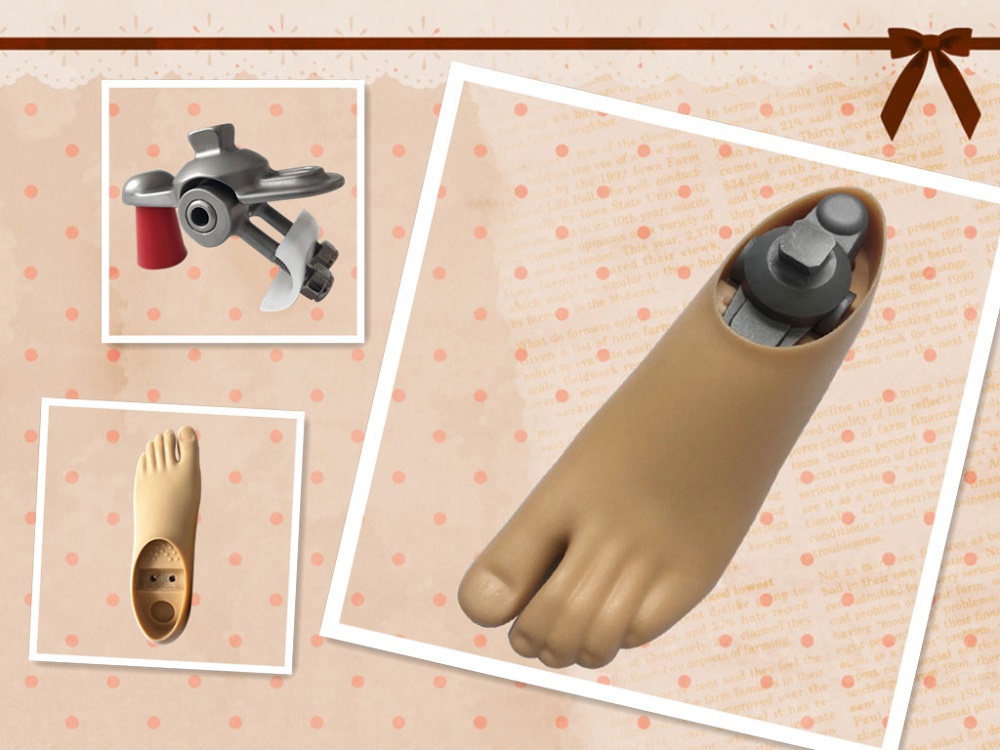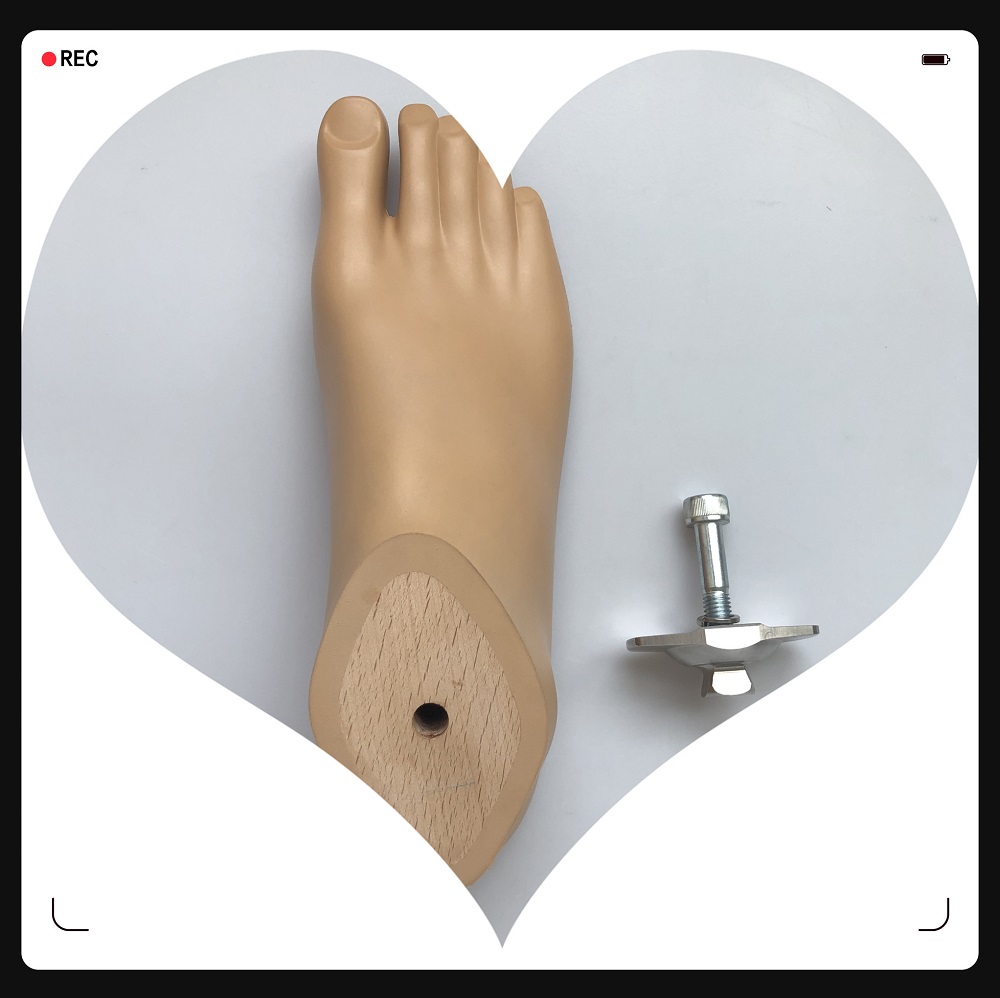There are several commonly used prosthetic feet: static ankle feet, uniaxial feet, energy storage feet, non-slip feet, carbon fiber feet, etc. Each type of foot is suitable for different people, and many factors should be considered when choosing a prosthesis, such as the age of the patient, the length of the residual limb, the weight-bearing capacity of the residual limb, and whether the knee joint is stable if it is a thigh amputation, and the surrounding area. Environment, occupation, economic ability, maintenance conditions, etc.
Today, I will introduce two prosthetic feet with high cost performance.
(1) SACH FOOT
SACH feet are fixed ankle soft heels. Its ankle and midsection are made of an inner core, covered with foam and shaped like a foot. Its heel is equipped with a soft plastic foam wedge, which is also called a soft heel. During a heel strike, the soft heel deforms under pressure and then touches the ground, similar to plantar flexion of the foot. As the prosthetic foot continues to roll forward, the movement of the front part of the foam shell approximates the dorsal extension of the toe. The movement of the prosthetic foot in the non-shaped plane is achieved by the elastic material on the foot.
SACH feet are lighter in weight. It can also be used for small leg prostheses with good results. When used for a thigh prosthesis, it is only suitable for patients who walk on flat ground or patients in areas with relatively simple ground conditions. The flexible movement of the foot is limited to the heel and metatarsophalangeal joints, and it has no inversion and rotation functions. As the height of the amputation increases and the complexity of the terrain increases, the foot becomes less suitable. In addition, the stability of the knee joint is also adversely affected due to the rigidity of the landing.
(2) Single Axis Foot

A uniaxial foot has an articulation axis relative to the human ankle joint. The foot can do dorsiflexion and plantarflexion around this axis. The structure of the foot also determines that it can only move in a non-trivial plane. The range of motion and damping of dorsiflexion and plantar flexion of the uniaxial foot can be adjusted by means of cushioning devices located at the front and rear of the shaft. They also play a role in the stability of the knee joint. The disadvantage of this type of foot is that it is heavy, used for a long time or in poor conditions, and the joints are worn out.
Post time: Jun-30-2022

